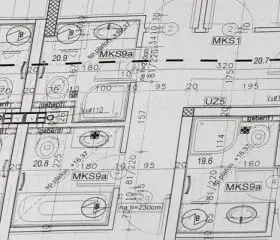/496797885-1600x400.jpg?width=300&name=496797885-1600x400.jpg)
STOP WORKPLACE TRAFFIC ACCIDENTS WITH THESE CRITICAL STEPS
Often workplace safety is only improved once an accident has taken place, especially with relation to traffic and vehicles. A worker is injured on site, an investigation finds weaknesses in the system, and changes are implemented. But it shouldn’t take a serious accident to serve as a wake-up call.
Every business can and should take a wide range of pre-emptive steps to improve the traffic safety of their worksite.
Site roads and their traffic management arrangements should be designed by qualified personnel (e.g. civil engineers) in accordance with sound design principles.
Traffic signs used for site roads must be in accordance with the appropriate part of Australian Standard AS 1742. Safety signs must be used for:
- Speed limits
- Sharp bends
- Junctions
- Pedestrian crossings
- Vehicle crossings
- Blind corners
- Steep gradients
- Road works
- Any other specific site hazard
Speed limits should be imposed throughout the site, as appropriate (e.g. 5 - 20 km per hour). Measures should be in place to ensure adherence to site speed limits (e.g. speed humps, training, instructions, signage and observations of driver performance).
Parking facilities should be designed and constructed in accordance with Australian Standard AS 2890. Parking facilities for persons with disabilities should also be provided, as appropriate.
Marked and sign-posted pedestrian crossings, as well as safety barriers in full accordance with Australian Standard AS 3845, should be located where required.
On-site refuelling of vehicles (including on construction and temporary sites) must be carried out only in designated and properly signed stations. Where possible, such areas should be bunded.
Precautions for on-site refuelling and/or fuel transfer, should include, but not be limited to the following:
- Use of electrical earth straps, clips, etc. to prevent static charges building up and causing a spark
- Specific instructions for towing fuel trailers over rough terrain
- Specific instructions for keeping valves closed and vents open
- An assessment of the trailer to determine whether it will cause a spill if it rolls over
- Spill control equipment of the appropriate type and in sufficient quantities, as required on each site
Fuel-dispensing equipment should be in accordance with Australian Standard AS/NZS 2229.
The arrangements of the following Australian standards should be utilised in the development of specific site procedures, as applicable:
- AS/NZS 1020 for arrangements related to the control of undesirable static electricity
- AS 1940 for arrangements related to the storage and handling of flammable and combustible liquids
- AS 2809 for arrangements related to road tank vehicles for dangerous goods
- AS 4979 for arrangements related to precautions against electrostatic ignition during tank vehicle loading
Download Your Free Checklist PDF
Get instant access to our expert-designed checklist to help you. Simply fill out the form below to download your copy.Want to Reduce Vehicle and Pedestrian Risks On-Site?
Our consulting services help you design safer traffic management systems tailored to your operations and layout.SIMILAR READINGS

3 min read
3 min read
The safety of your workers is paramount. Make sure that...
Read More
5 min read
5 min read
Discover the most effective and critical steps in protecting your workplace from hazardous risks....
Read More
3 min read
3 min read
How the Australian Standards are used in court proceedings...
Read More
2 min read
2 min read
Conduct your next audit with minimum of fuss and maximum...
Read More